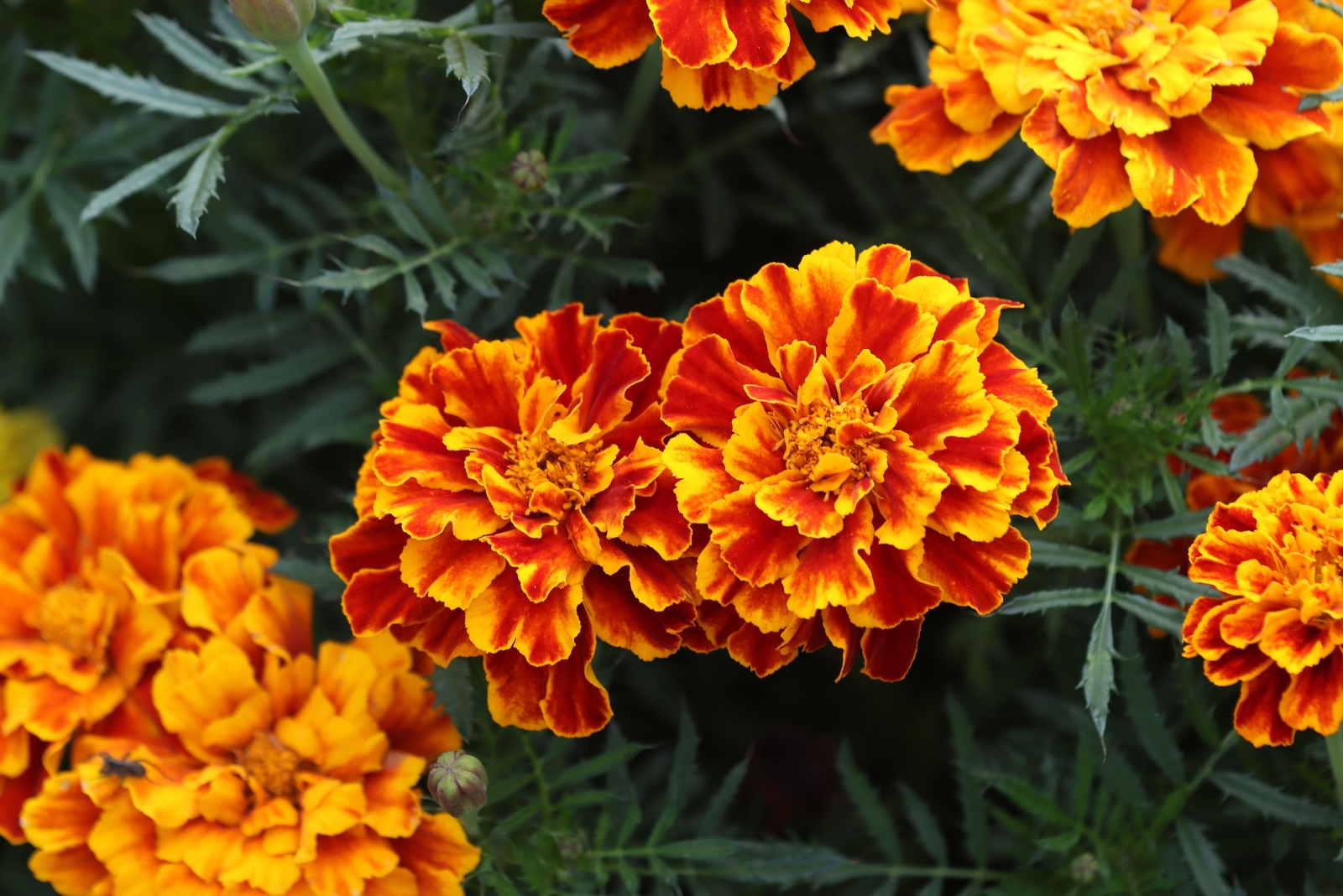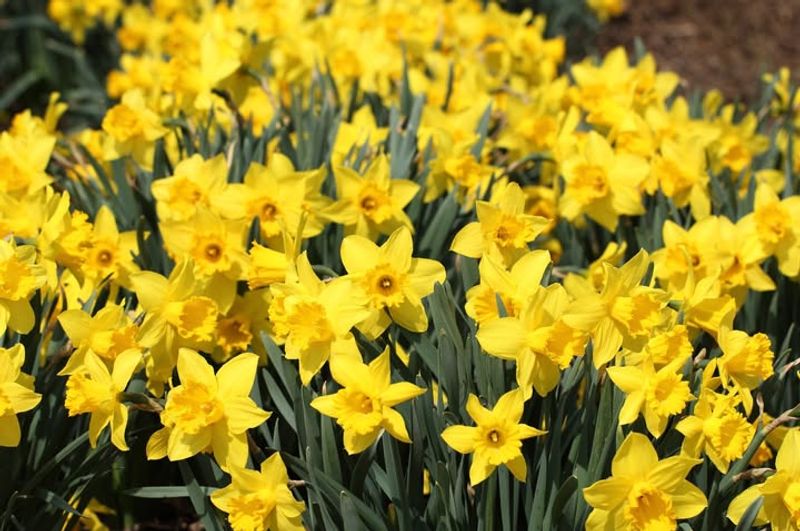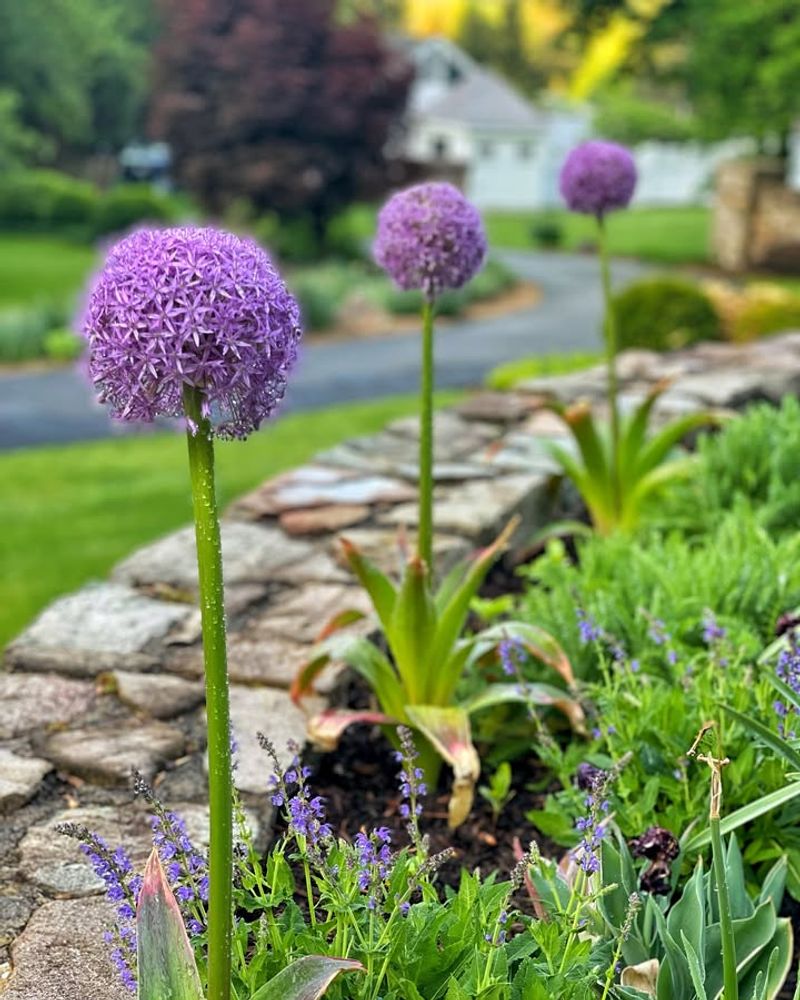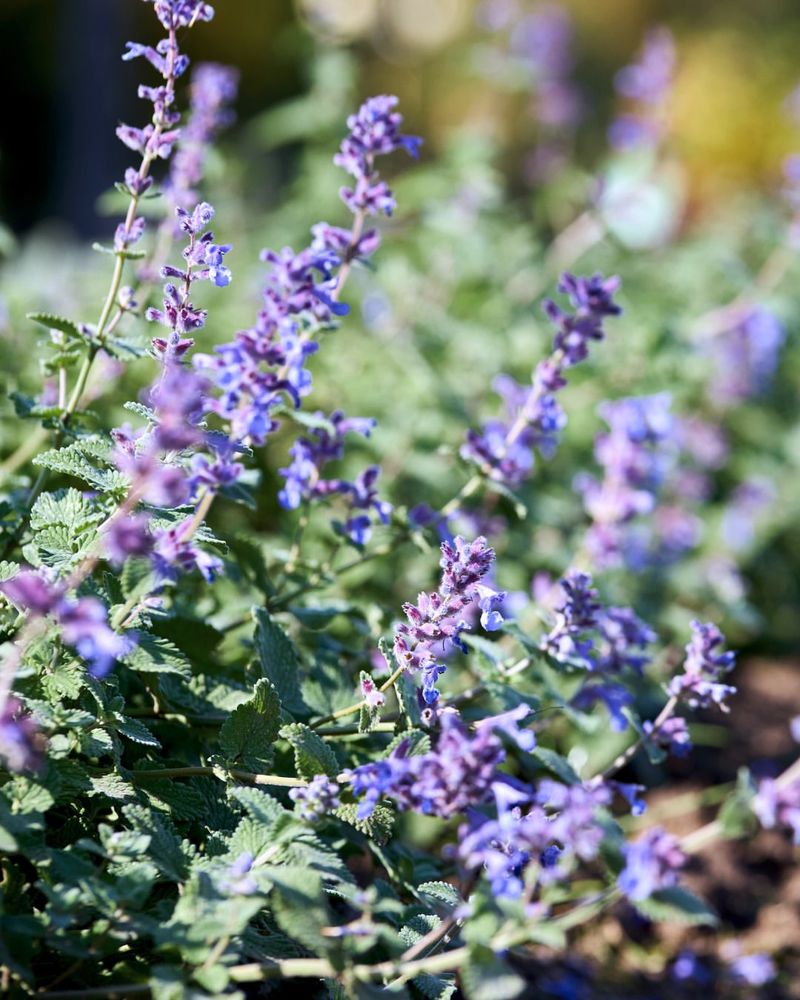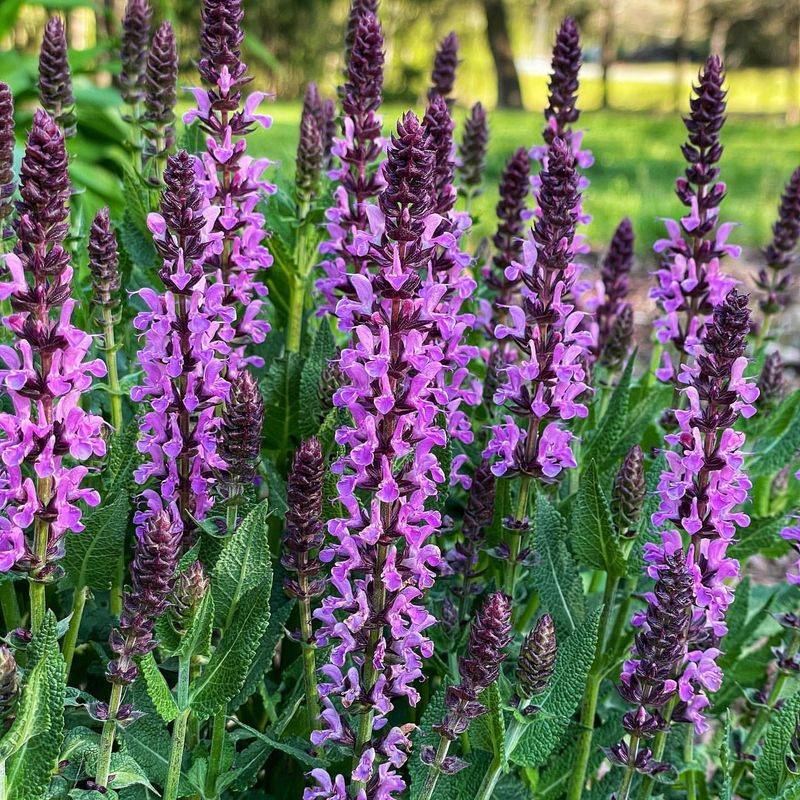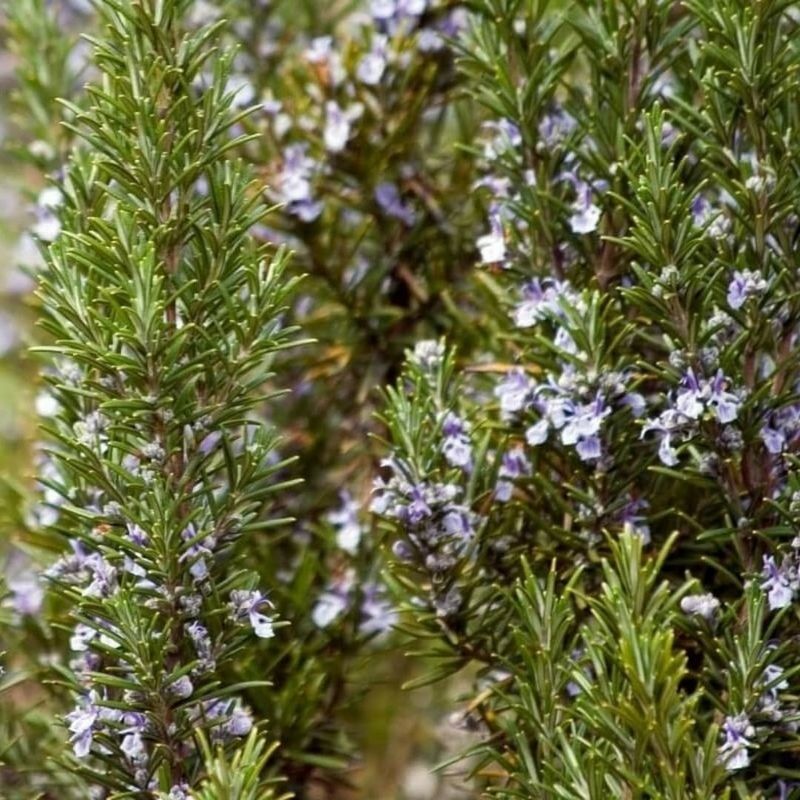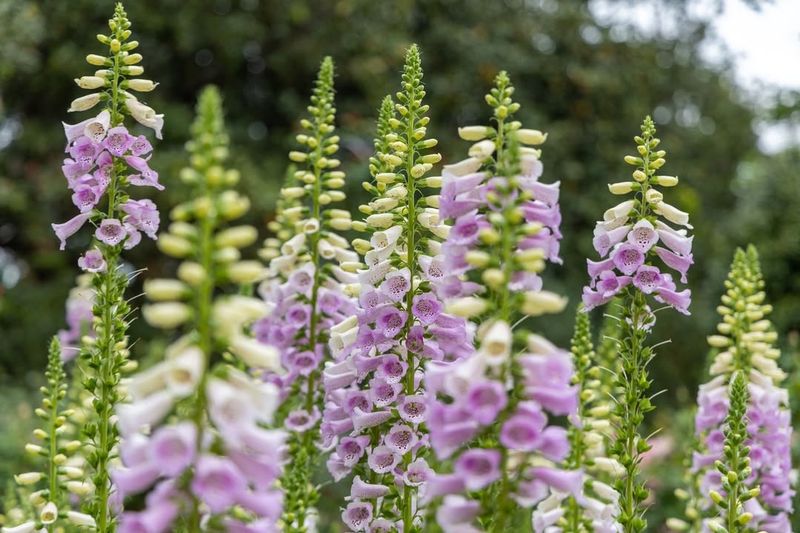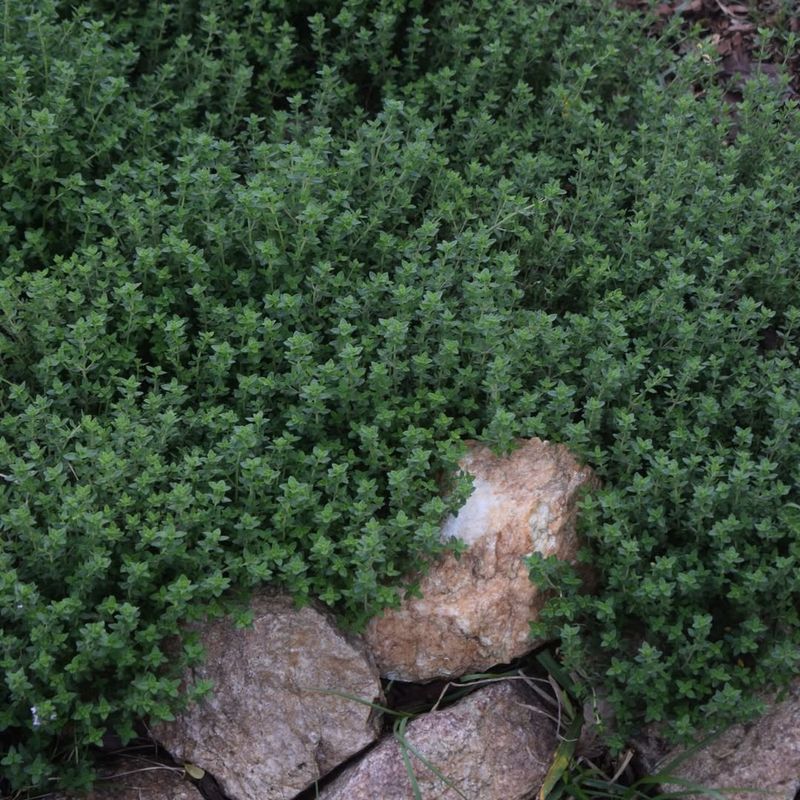Maryland groundhogs love turning soft soil into their personal playground, and I’ve had a few tunnels pop up out of nowhere. Some plants actually convince them to stay away.
It’s surprising how well certain scents and textures work. These picks help keep your yard from turning into a digging zone.
1. Lavender
With its gorgeous purple blooms and calming fragrance, lavender might smell wonderful to humans, but groundhogs absolutely hate it. The strong aromatic oils in lavender leaves and flowers overwhelm their sensitive noses, making them turn away quickly.
Maryland gardeners often plant lavender along garden borders or near vegetable patches to create a natural barrier. It thrives in sunny spots with well-drained soil, making it perfect for the state’s climate.
Plus, you get beautiful flowers and a pleasant scent around your yard all summer long.
2. Marigolds
Marigolds bring cheerful color to any Maryland garden while keeping groundhogs at bay with their pungent smell. These hardy annuals produce vibrant orange, yellow, and red blooms that humans love but groundhogs find completely offensive.
The secret lies in their distinctive scent, which comes from natural compounds in the leaves and petals. Plant them around the perimeter of your vegetable garden or flower beds for maximum protection.
They grow easily in Maryland’s warm summers and require minimal care, making them a favorite choice.
3. Daffodils
Daffodils are springtime favorites across Maryland, and they have a hidden superpower: groundhogs won’t touch them. Every part of the daffodil plant contains toxic compounds that taste terrible and cause digestive upset, so groundhogs instinctively avoid them.
Plant these cheerful yellow bulbs in fall, and they’ll return year after year without any fuss. They work wonderfully as a natural fence around more vulnerable plants.
Maryland homeowners appreciate that daffodils are low-maintenance and multiply over time, creating bigger protective barriers.
4. Alliums
Ornamental alliums belong to the onion family, and their strong, pungent smell sends groundhogs running in the opposite direction. These eye-catching plants produce dramatic purple or white spherical flower heads that tower above other garden plants on tall stems.
Maryland gardeners love them because they bloom in late spring and early summer, bridging the gap between spring bulbs and summer perennials. Their onion-like scent is unpleasant to groundhogs but barely noticeable to people.
Plant allium bulbs in fall for stunning displays that also protect your yard.
5. Catmint
Catmint produces masses of beautiful blue-purple flowers and aromatic foliage that groundhogs find extremely unpleasant. While cats might enjoy rolling in it, groundhogs steer clear because the minty, slightly bitter scent overwhelms their senses.
Maryland residents appreciate catmint’s long blooming period, which lasts from late spring through fall with occasional trimming. It handles the state’s hot summers beautifully and requires very little water once established.
Plant it along walkways or garden edges to create a fragrant, groundhog-free zone around your property.
6. Salvia
Salvia’s vibrant spikes of red, purple, or blue flowers make Maryland gardens pop with color while keeping groundhogs away. The aromatic leaves contain oils that groundhogs find distasteful, so they typically avoid areas where salvia grows thick.
This drought-tolerant perennial thrives in Maryland’s summer heat and attracts hummingbirds and butterflies instead of pesky groundhogs. It grows well in full sun and needs minimal maintenance once established.
Many Maryland homeowners plant salvia in containers near patios or along fence lines for added protection.
7. Rosemary
Rosemary serves double duty in Maryland gardens as both a culinary herb and a groundhog repellent. Its strong, pine-like fragrance comes from essential oils in the needle-like leaves, which groundhogs find absolutely unbearable.
Plant rosemary near vegetables or flowers that groundhogs typically target, and you’ll notice fewer visits from these garden pests. Maryland gardeners can grow rosemary in pots and move them indoors during winter, or choose cold-hardy varieties.
You’ll enjoy fresh herbs for cooking while keeping your yard protected from unwanted diggers.
8. Garlic
Planting garlic around your Maryland garden creates an invisible shield that groundhogs won’t cross. The powerful sulfur compounds that give garlic its characteristic smell and taste are incredibly offensive to groundhogs’ sensitive noses.
Maryland homeowners often plant garlic cloves in fall, and they’ll sprout in early spring, providing protection right when groundhogs become most active. The bonus is harvesting fresh garlic bulbs in summer for your kitchen.
Space garlic plants around vulnerable crops or flower beds for maximum effectiveness against these persistent diggers.
9. Foxglove
Foxglove brings dramatic height and cottage-garden charm to Maryland landscapes while naturally deterring groundhogs. Every part of this stunning biennial contains compounds that make it highly unpalatable, so groundhogs instinctively leave it alone.
The tall spires of tubular flowers in pink, purple, white, or yellow bloom in late spring and early summer, creating vertical interest. Maryland gardeners should note that foxglove prefers partial shade and moist soil, making it perfect for woodland edges.
Plant foxglove behind shorter plants to create layers of groundhog-proof beauty.
10. Thyme
Thyme works as a fragrant ground cover that groundhogs absolutely detest walking across or eating. This low-growing herb releases strong aromatic oils when brushed against, creating an invisible barrier that keeps groundhogs from entering protected areas.
Maryland gardeners love thyme because it thrives in poor soil and hot, dry conditions while requiring almost no maintenance. Plant it between stepping stones, along pathways, or as edging around vegetable beds.
You’ll have fresh herbs for cooking and a yard that stays free from groundhog damage throughout the growing season.

